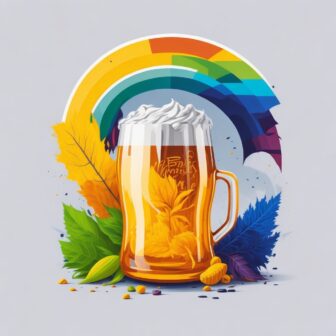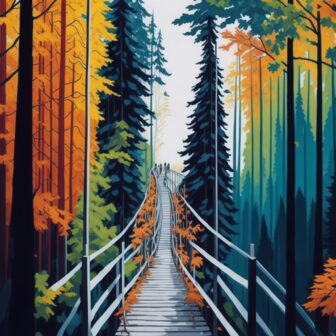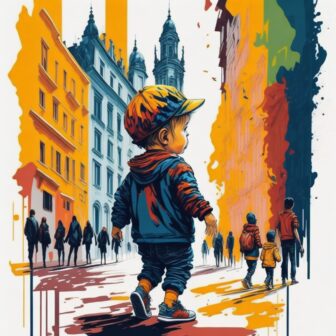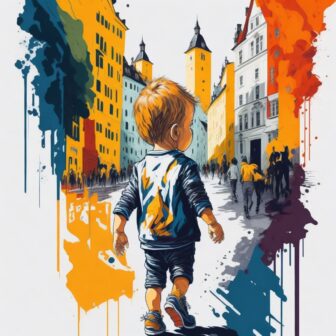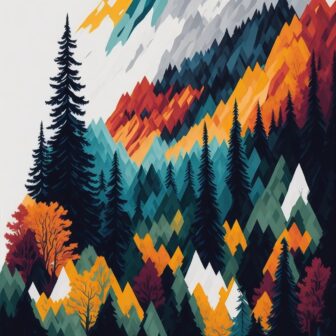Best Things to Do in Germany at Least Once in Your Life
For any type of traveler, Germany has a lot to offer. I have put together for you a list of best things to do in Germany at least once in your life. Here is my selection of the top activities in Germany.
1. Visit Neuschwanstein Castle
Everyone should have visited Neuschwanstein Castle at least once, after all the fairytale castle is one of the most famous and popular sights in Germany. By visiting I don’t mean the vantage points and region around it, but the interior.
With a bit of planning and this guide, visiting Neuschwanstein Castle is easy. Here you will find information on tickets, directions, opening hours and views from outside.
I’ve summarized everything you need to know about the visit. In addition, I reveal alternatives, places worth seeing around and also have tips for one or the other hike. Because I wouldn’t go to Füssen and Schwangau just to visit the castle. The region is far too beautiful for that!
Important information for wheelchair users according to the website of the royal palaces: Due to the restrictions and protective measures, people who are dependent on a wheelchair cannot visit the royal palaces at the moment.
The story of the fairytale castle that inspired Walt Disney
The castle, built in 1869, was actually intended to serve as a retreat for the Bavarian King Ludwig II. It is located in Hohenschwangau near Füssen in the Allgäu. But the construction ended up being so expensive that in 1886 he was declared unfit to govern.
As the castle looks magnificent and luxurious from afar, it is no wonder that it took 17 years to build. To be honest, it would have been many more years if the king hadn’t drowned in July 1886. He died before his fairytale castle was completed. To this day, nothing sure is known about King Ludwig’s death. The rumors range from suicide to murder.
After his death, work stopped immediately. The castle was even opened to visitors in the same year. The castle was unique even for that time. What the best carpenters and painters worked hard for years. The level of detail is extremely high.
Neuschwanstein tickets and guided tour
One thing you need to know: the castle is extremely popular. You should definitely reserve tickets before your trip. Guided tours are offered in German and English. You cannot visit the castle without a guide.
An accompanying audio guide is available for the following languages: Japanese, French, Spanish, Italian, Czech, Slovenian, Russian, Polish, Chinese (Mandarin), Portuguese, Hungarian, Greek, Dutch, Korean, Thai and Arabic.
The visit is only possible as part of a guided tour (German or English). Please note that the group sizes have been significantly reduced due to hygiene regulations. This means that only about 10% of the previously permitted visitors are allowed to visit the castle per day!
Buy tickets - On site
The Ticket Center Hohenschwangau, located below the castle in the town of the same name, is the only way to buy tickets on site. Queues are always very long and tickets for the same day often sell out.
Buy tickets - Online before the visit
You should reserve your tickets for the castle online in advance. So you already have a fixed time for the tour on a certain day. Please note that this is only a reservation. You have to pick up the ticket on site.
How much do Neuschwanstein Castle tickets cost?
Standard tickets adults: € 13
Reduced: €12
Children under 18 are free
Online reservations are €2.50 more expensive each time, as the presale fee is added
That’s how it’s done:
The tickets contain the tour number and the admission time. Watch the scoreboard and don’t miss your time, because you cannot exchange the ticket if you miss it.
Booked tickets must be picked up at the ticket center no later than 1 hour before the admission time. Also factor in the 30 minutes it takes you to get to the castle entrance.
A guided tour lasts about 35 - 40 minutes.
There is a strict ban on photography in the castle itself.
According to the official site, you climb 165 steps up and 181 steps down during the tour - which isn’t much in my opinion. For people with walking difficulties there is a special passenger elevator that allows you to take part in the normal castle tour.
Admission and opening times
Opening hours:
Ticket sales times in the Ticket Center: April to October 15: 8 a.m. to 4 p.m.; 16 October to March: 9am to 3pm
Neuschwanstein Castle: April to October 15: 9 a.m. to 6 p.m.; 16 October to March: 10am to 4pm. Open every day except January 1st, December 24th, 25th and 31st.
Combination ticket “Königsschlösser” for 26 euros: The ticket is valid for 6 months and entitles you to a single visit to the castles of Neuschwanstein, Linderhof and Herrenchiemsee
Guided tours in the castle
The tours are led by the staff of the Bavarian Palace Administration (languages German and English). For all other visitors there are accompanied audio guide tours in the languages offered.
Via Hohenschwangau and the famous Marienbrücke it goes to Neuschwanstein Castle. On the way up the mountain to the castle, your guide will tell you the story of King Ludwig II and his fairytale castle. The train also takes you through the beautiful nature of the Bavarian Alps. On hot days you can take a refreshing bath in the Alpsee.
Arrival and parking at the castle
Sufficient parking spaces are available in the immediate vicinity of the castle. Parking costs 5 euros for the whole day. Many visitors also park next to the access road. I suspect, however, that fines are distributed here.
Arriving by car or bus:
Via the A7 motorway (Ulm - Kempten - Füssen) to the end of the motorway. From Füssen via the B17 federal road in the direction of Schwangau; after leaving the town, turn right in the direction of Hohenschwangau. Alternatively via the A7 motorway: exit Kempten - on the federal road B12 to Marktoberdorf. Via the B16 to Roßhaupten - OAL I to Buching - then B17 to Schwangau and Hohenschwangau.
The address to enter into the navigation system: Neuschwanstein Straße 20, 87645 Schwangau
From Füssen you can get to Hohenschwangau very quickly. You can already see the castle from afar. The signage “Altschlösser” is of course more than sufficient, after all, everyone can see where it is going.
Leave your backpack or stroller in the car. These items are not allowed in the castle on the guided tour.
How to get up to the castle
When it comes to the way from the Hohenschwangau car park to the entrance of the castle, the specified 30-minute walk is doable for everyone. Goes just a little up, but everything is paved.
Alternatively, you can go up with the horse-drawn carriage.
If you don’t feel like walking to the entrance, you can take a horse-drawn carriage. I really felt sorry for the poor animals. The carriages are anything but romantic. Cost 6 euros up and 3 euros per person down.
Once at the top, there’s a gift shop that welcomes visitors with cute cups, posters, coffee and cake. Everything for the thirsty, hungry and shopaholic tourists.
The last few meters were worth the walk, because the castle looks breathtaking even from afar and casts a mystical spell on every visitor.
This is what awaits you inside
Now you’re probably wondering what awaits you inside. Yes, well, to be honest, it’s quite impressive how delicately everything is carved and designed. But: It would definitely be too dark and gloomy for me. Apparently it was a trend back then, I would have gotten depressed if I had had to live here.
Neuschwanstein Castle was Ludwig’s pride and joy. He dedicated the magnificent building to the composer Richard Wagner. That’s why you can admire paintings and illustrations from operas by Wagner in almost every room
You will visit these places as part of the tour:
The lower room with marble portals.
Throne Room: Mixture of church and throne room. The 4 meter high chandelier, which occupies the 3rd and 4th floors and the western part of the palace, is particularly impressive.
Dining room: Seems quite gloomy to me because of the oak wood. Anteroom to the king’s bedroom. His desire for a bell system allowed him to call his servants in this room from any other room.
Bedroom with an ornate bed in neo-Gothic style. Based on the Bavarian coat of arms, covered with blue silk. Lions, swans, crowns and lilies are also embroidered on it. Pretty pretentious and somber.
You will also visit the oratorio, the changing room, the salon, the grotto and conservatory, the study room, the antechamber, the passage, the upper hall and the singer hall.
Best time to visit
More than 1.5 million visitors come to see Neuschwanstein Castle every year. Summer (July and August) is always the busiest.
You have to reckon with 6,000 tourists per day who want to see this attraction. Although the tours are short, that’s quite a lot. So make sure you book your ticket as early as possible and in advance. Don’t forget that this is just a reservation. You have to exchange the ticket for a real one.
Weekdays are much less busy than weekends. Often less in winter than in spring or autumn.
For Neuschwanstein I still recommend: come as early as possible. The light for photos is better, you get the ticket faster and you hardly lose any time. Because then most tourists are still having breakfast in the hotel.
What time of year for Neuschwanstein Castle?
I love autumn with all its colors. Then the hiking trails are not so overcrowded and the sun doesn’t bang so hard from the sky.
Even in winter I find Neuschwanstein very romantic. When there is snow, the typical panorama photo from the Tegelberg looks a lot nicer.
Hiking around
In Schwangau and Füssen you can hike in the footsteps of King Ludwig. At this point you are probably looking for the best vantage points for photos of the royal castles Neuschwanstein Castle and Hohenschwangau Castle. Here are the hikes I recommend.
This hike through the kingdom of the fairytale king Ludwig II of Bavaria starts at the parking lot of the Tegelbergbahn. A well-signposted footpath takes about 20 minutes along the small mountain stream Pöllat past the former Roman baths and the old gypsum mill. Then you reach the roaring Pöllat Gorge.
This section is only for warming up.
Now you have it in view: Neuschwanstein Castle is enthroned imposingly above on a vertically sloping rock. At the latest when you look at the smaller and larger waterfalls up close, you will see why King Ludwig II was so fascinated by this place.
An iron footbridge and many stone steps awaken the spirit of adventure. They lead through the gorge directly up to the castle and the Marienbrücke - the next destination.
Arrival Marienbrücke: Neuschwanstein Castle and the Allgäu around Schwangau are at your feet
The walk over the 90 meter high bridge over the Pöllatfall is worthwhile. The original railing of the Marienbrücke is still there. Unfortunately, since Instagram, a visit to the Marienbrücke is only worthwhile in the early morning, best on a weekday.
If you are a sightseeing tourist and only interested in Neuschwanstein Castle, the hike ends here.
If you have another 2 hours, then follow the route towards King Ludwig II’s former hunting lodge to see a glimpse of Hohenschwangau’s second royal palace. Start the ascent towards Bleckenau.
The former hunting lodge of King Ludwig II is located about 45 minutes above Neuschwanstein Castle, in the middle of a green plateau.
The hut is definitely beautiful and idyllic, but unfortunately also very touristy and expensive. But I still like the route, because you can get a nice overview of the region and the history of Schwangau here.
By the way, as an alternative to the descent, you can choose a paved road. Both paths lead back directly to the castle and the parking lot. If you don’t feel like it anymore, you can take the hourly shuttle bus back to the castle.
The most beautiful photo spots for Neuschwanstein Castle
From the terrace of the Rieth-Alpe you have a great view of Neuschwanstein Castle. Ideal for a meal overlooking the fairytale castle. The alp is on the Tegelberg.
Another point is the country road from Hohenschwangau in the direction of Tegelberg to the valley station. There are a few parking bays on the road to stop.
You must have visit Neuschwanstein Castle at least once in your life and that’s why I have put it on this list of best things to do in Germany at least once in your life.
2. Heidelberg Castle – the epitome of German Romanticism
The romantic ruins of Heidelberg Castle have been one of the most famous sights in Europe and a magnet for millions of visitors from all over the world since the 19th century.
Even the backdrop of the castle ruins, overgrown with ivy, tells of the grandeur of its former inhabitants, the Wittelsbach family.
Built as a fortified castle with towers, casemates and moats around 1300, the complex developed over four hundred years into a feudal figurehead for the Electors of the Palatinate.
It is probably the special mixture of presence and transience that gives the Heidelberger its fascinating aura: the epitome of German romanticism always seems a bit removed from the world.
The best-preserved building is the Friedrichsbau with the ancestral gallery of the electors.
The castle church is on the ground floor, with the living quarters above it. The magnificent pleasure garden is particularly fascinating as the idea of an earthly paradise created by human hands.
For a long time, the “Hortus Palatinus” was considered the eighth wonder of the world, although it was never completed. To get an insight into the everyday life of the residents of the Heidelberg Castle, the guided tour “Life at Court” is offered on Saturdays.
RELATED
Best Places to Visit in Heidelberg
Best Hotels in Heidelberg
3. Visit Pinakothek der Moderne, Munich
The Pinakothek der Moderne is a world-renowned museum for art, architecture, graphics and design.
They not only organizes classic tours, ranging from overview tours to expert discussions, but also programs to participate. According to the concept of the Pinakothek der Moderne, they want their visitors to get to know the Pinakothek der Moderne as a place of sensual and intellectual pleasure, of encounters, of discovery and research. They you to actively participate in our wide range of offers - tailored to all visitors.
Location: Barerstrasse 40, 80333 Munich
4. Visit and linger in the Old Town of Nuremberg
Nuremberg has its very own charm and is one of my favorite cities in Germany. I have put together my favorite places in Nuremberg’s old town for you, a short city tour from south to north through the capital of the Franconians.
Two different things always come to mind when I think of Nuremberg – beautiful old town and unspeakable horrors during the Second World War. No one can undo the latter, but at least the people of Nuremberg managed to rebuild the old town that had been destroyed by the Allies.
The craftsmen’s yard at the Frauentorturm
Nuremberg has four striking round towers in the old city fortifications. One of them is the Frauentorturm in the immediate vicinity of the main train station, which was part of the city wall. Since 1971, the Handwerkerhof has been attached right next to it. In the former armory of the Frauentor, the last Nuremberg city fortification, there are small half-timbered houses where you can get all Nuremberg and Franconian specialties such as sausages, gingerbread or wine.
But you can also buy traditional children’s toys made of tin and wood or glass art here - typical Nuremberg products. So it’s no wonder that the Handwerkerhof with its small alleys is particularly popular around Christmas with locals and tourists alike.
New Museum Nuremberg
Not far from the Frauentor and the Handwerkerhof is the modern building of the New Museum - State Museum of Art and Design in Nuremberg. The museum, which opened in 2000, has a spectacular glass facade that is nevertheless well integrated into the historical cityscape. The exhibitions show contemporary art and include what is now the third-largest Gerhard Richter collection. Regularly changing art events also take place on the forecourt of the museum.
St. Clare Church
The Catholic St. Klarakirche is one of the oldest sacred buildings in the city. Construction of the church began in 1270 and consecrated in 1274. It was badly damaged in World War II, but rebuilt in the post-war period. The church is kept simple and bright, a small spiral staircase to the organ rounds off the appearance. The church does not include a fixed parish, but as a city church is open to everyone - regardless of religion or church affiliation.
St. Lorenz Church
Let’s stay with the churches. The Evangelical-Lutheran St. Lorenzkirche is one of the churches that gives the old town districts their name. The southern district of the city center divided by the Pegnitz is therefore called Altstadt - St. Lorenz. This large Gothic church is very present in the cityscape. It stands elevated in its place and shines in the evening sun. Nevertheless, it is relatively cool due to its construction and is jokingly called “God’s refrigerator”.
Musicians or street performers can often be found in front of its richly decorated western portal, courting the attention and coins of the people passing by. With one of the daily church and tower tours, you can also get a completely different view of the church.
The Nassauer House in the old town of Nuremberg
Opposite the Lorenz Church is an impressive residential tower made of red castle sandstone with ornate oriels, known as the Nassauer Haus (or the Schlüsselfeldersche Stiftungshaus). This house was also badly damaged in World War II and rebuilt in the 1950s. The house was built in the Romanesque style and is the only residential tower preserved in Nuremberg. Due to conversions, Gothic elements are now more style-defining.
Museum bridge with a view of the Heilig-Geist-Spital
The Heilig-Geist-Spital is a beautiful building (14th century) and the subject of numerous Instagram posts from Nuremberg. It stretches with a so-called hydraulic structure over the Pegnitz to form an island. Even today there is still a retirement home in the building. Next door is the pharmacy that has existed since the 15th century, as well as a restaurant and wine bar. Incidentally, the Museumsbrücke, from which you have the best view of the Heilig-Geist-Spital, connects the Lorenz old town with the Sebalder.
Nuremberg main market with Frauenkirche
Nuremberg’s main market is better known to many as the Christkindlesmarkt, which takes place here during the Advent season. Every year, the chosen Christ Child holds the prologue to the opening of the market from the balcony of the Frauenkirche on the east side of the main market. Outside the Advent season, the weekly market takes place here. Monday to Saturday from 7 a.m. to 8 p.m., there are around 40 market stalls that move to the pedestrian zone between St. Lorenz and Hans-Sachs-Platz during events such as the Christkindlesmarkt.
The Frauenkirche, also the parish church of Our Lady, was built in the 14th century on the site of a synagogue destroyed by the plague and is located in the old town of Sebalde. A clock adorns the west gable of the Frauenkirche, called the Little Man Running, at which point 12 o’clock the seven electors run around the emperor and pay homage to him. The little men’s walk was donated by Emperor Karl in 1356 to commemorate the Golden Bull.
Nuremberg Castle – Imperial Castle and Burggrafenburg
If you have made it to the Bratwursthäusle, you will certainly make it up to the castle. The climb is steep, but it’s worth it. From here you have the best view of the city. The double castle represents the northern fortification of the old town, an impressive fortification. You can even spend the night in the castle complex, in a youth hostel that is housed in the former imperial stables.
RELATED:
Best Places to Visit in Landshut


